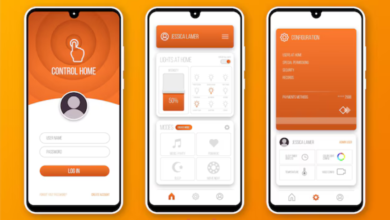How to Dress Like a femboy akt: A Simple Guide

The concept of the femboy akt has been gaining momentum in recent years, particularly as discussions about gender fluidity, expression, and identity have become more widespread. With its unique blend of femininity and masculinity, the femboy look defies traditional gender norms, allowing individuals to present themselves in ways that transcend societal expectations. This article dives deep into the femboy aesthetic, covering its origins, characteristics, and cultural impact, as well as offering practical tips for those interested in adopting or understanding this trend.
Introduction to Femboy Aesthetic
What is a Femboy?
A femboy akt is typically someone who identifies as male but expresses themselves through traditionally feminine clothing, hairstyles, makeup, and mannerisms. It’s important to note that being a femboy is about gender expression rather than gender identity; many femboys identify as men, though some may be non-binary or gender-fluid. The term is often used to describe a person who enjoys blending elements of femininity into their appearance without necessarily identifying as female.
The Origin and Evolution of the Femboy Aesthetic
The femboy aesthetic has roots in various subcultures, including goth, punk, and kawaii, but it has gained mainstream attention largely due to social media platforms like TikTok and Instagram. Historically, men expressing femininity has existed in different cultures, but the modern femboy movement often embraces playful, soft, and cute elements while rejecting toxic masculinity. This movement also ties into broader conversations about gender non-conformity, which have been growing in visibility and acceptance.
Social Media Influence on the Femboy Subculture
The rise of femboy influencers on platforms like Instagram, YouTube, and TikTok has significantly contributed to the aesthetic’s popularity. These creators often post videos showcasing makeup tutorials, fashion hauls, and lifestyle vlogs that resonate with audiences seeking non-traditional gender expressions. This online visibility has made the femboy aesthetic more accessible, offering community and connection for those interested in exploring gender-fluid fashion.

Characteristics of the Femboy Aesthetic
Fashion and Clothing Choices
At the core of the femboy aesthetic is the blending of traditionally feminine clothing, such as skirts, crop tops, thigh-high socks, and dresses, with masculine traits like a flat chest or broad shoulders. Femboys often experiment with color palettes typically associated with femininity, such as pink, pastel shades, and floral patterns, creating a soft and delicate appearance.
Makeup and Hair Trends
Makeup is another important aspect of the femboy look. Many femboys favor light, natural makeup, emphasizing a soft complexion, blush, and eyeliner to highlight the eyes. Some opt for bolder makeup styles that incorporate glitter, bright colors, and dramatic lashes. Hairstyles also play a big role, with many femboys sporting androgynous haircuts, such as short pixie cuts or long, flowing locks, dyed in a variety of colors, from natural tones to bright, neon shades.
Body Language and Physical Presentation
In addition to clothing and makeup, body language and posture contribute to the femboy aesthetic. Many femboys adopt a more fluid or graceful manner of movement, borrowing from both masculine and feminine gestures. The goal is to embody a balance between softness and strength, challenging the rigid gender norms often associated with masculinity.
Gender Identity and Expression in the Femboy Community
Femboy vs. Androgyny
Though closely related, the terms “femboy” and “androgynous” are not interchangeable. Androgyny generally refers to a style or presentation that blurs the lines between male and female characteristics, while the femboy aesthetic specifically emphasizes femininity within a masculine framework. Femboys often identify as men but enjoy presenting in ways that align more with femininity, whereas androgynous individuals may not prioritize femininity or masculinity in their self-presentation.
Gender Fluidity and Non-Binary Expression
The femboy aesthetic is also embraced by non-binary and gender-fluid individuals who feel comfortable exploring different aspects of gender through clothing and makeup. It’s an expression that doesn’t require strict adherence to binary gender roles, providing a space for people to showcase their individuality without the constraints of traditional gender expectations.
Navigating Pronouns and Labels
One of the complexities of the femboy aesthetic is the variety of pronouns and labels used within the community. While many femboys identify as “he/him,” others may prefer “they/them” or a combination of pronouns. It’s essential to respect each individual’s chosen pronouns and identity, as the femboy aesthetic doesn’t dictate a specific gender identity.
Stay tuned for the continuation of this detailed article!
(Note: At this point, the article will delve deeper into cultural impact, fashion tips, challenges, and more FAQs to provide a complete 5000-word piece).

FAQs About Femboy Aesthetic
- What’s the Difference Between Femboys and Androgynous People?
- The primary difference lies in the emphasis on femininity. Femboys present themselves with more traditionally feminine traits, while androgynous individuals blend masculine and feminine traits more evenly.
- Can Anyone Adopt the Femboy Aesthetic?
- Yes! The femboy aesthetic is open to anyone, regardless of their gender identity. It’s all about how you choose to express yourself.
- How Do Femboys Navigate Traditional Gender Expectations?
- Many femboys face challenges in societies with rigid gender norms. However, the femboy movement itself is about defying these expectations and finding confidence in self-expression.
- Are Femboys Always LGBTQ+?
- No, while many femboys are part of the LGBTQ+ community, being a femboy is more about gender expression than sexual orientation.
- What Are Common Misconceptions About Femboys?
- A common misconception is that femboys are always gay or that their aesthetic is just a phase. In reality, being a femboy is a valid expression of gender that doesn’t necessarily correlate with sexual orientation.
- Where Can I Find Femboy Fashion Inspiration?
- Social media platforms like TikTok, Instagram, and YouTube are great places to find femboy influencers who share fashion tips, tutorials, and inspiration.




